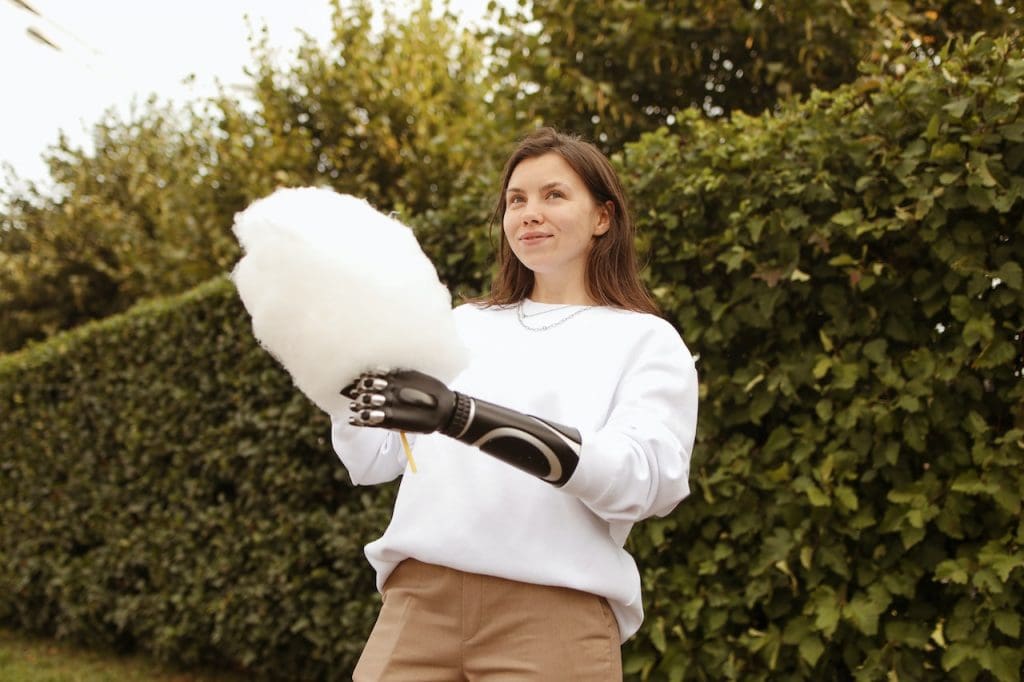Estimated reading time: 10 mins

Introduction: Invention Ideas that Need to be Made
The world of technology is ever-evolving, with countless innovations shaping our lives and changing the way we interact with our environment. However, there are still many amazing invention ideas waiting to be developed, some of which may transform our world in ways we cannot yet imagine. In this article, we will explore 50 potential invention ideas that haven’t been invented that could revolutionize various aspects of our lives and the world at large. There are inventions that need to be made!
Inventions Ideas that Need to be Made 1-10
1. Self-Healing Materials
Imagine a world where materials can heal themselves, eliminating the need for repairs or replacements. Self-healing materials could revolutionize industries such as construction, automotive, and electronics, prolonging the lifespan of products and reducing waste. It also has implications for military and armed forces, so I can imagine that the arms industry will bring invention ideas like this to the market first.
2. Teleportation Devices
Of all the inventions that need to be made, the ability to teleport instantly from one location to another is desired by the most people. It would drastically change the way we travel and commute, potentially eliminating the need for traditional transportation methods and reducing our carbon footprint.
3. Personal Flying Vehicles
While we have seen the emergence of drones and other flying devices, personal flying vehicles could offer a new mode of transportation, reducing traffic congestion and providing more efficient and eco-friendly travel options.
4. Inventing Artificial Gravity
I love this invention idea. Artificial gravity could revolutionize space exploration, enabling astronauts to live and work in space for extended periods without the adverse effects of weightlessness on the human body.
5. Weather Control Technology


Imagine being able to control the weather to prevent natural disasters, create optimal conditions for agriculture, and reduce the impact of climate change. Weather control technology could have far-reaching implications for our planet and our way of life.
6. Holographic Entertainment
Holographic technology has the potential to transform the entertainment industry, offering immersive, 3D experiences that could replace traditional screens and revolutionize how we consume media. This is one of those invention ideas that would have a major impact on traditional technologies such as flat screens and computing.
7. Ocean-Cleaning Machines
With pollution and plastic waste posing significant threats to our oceans, the development of advanced ocean-cleaning machines could help preserve marine ecosystems and protect the health of our planet.
8. Time Travel
The possibility of time travel has long captivated our imaginations. If invented, it would undoubtedly revolutionize our understanding of history, the future, and the nature of time itself. (I’ve always thought that if time travel (or at least, time travel to the past) was possible, there would be accounts of strange-looking people at major historical events… wouldn’t there?)
9. Invisibility Cloaks
Invisibility technology could have numerous applications, from stealth military operations to personal privacy and security. The development of invisibility cloaks would change the way we interact with our environment and each other.
10. Inventing Fusion Power Plants
Fusion power, which generates energy by fusing atomic nuclei, has the potential to provide a nearly limitless, clean, and sustainable energy source. Developing viable fusion power plants could significantly impact our energy infrastructure and help combat climate change.
Inventions Ideas that Need to be Made 11-20
11. Universal Translator Devices
A universal translator would eliminate language barriers, enabling seamless communication between people from different linguistic backgrounds and fostering global understanding and cooperation. Of all the inventions that need to be made, I suspect that this is one is closest to being a reality; our smartphones almost have these capabilities today.
12. Mind-Reading Machines
Mind-reading technology could unlock new ways of understanding human cognition, emotion, and behavior, with applications ranging from mental health treatment to criminal investigations and beyond.
13. Inventing Immortality Treatments
Of all the inventions that need to be made, this is the one that James Bond villains seek the most! Advancements in medical science may one day enable us to stop or reverse the aging process, effectively granting humans the ultimate longevity. This would have profound implications for society, including population growth, resource allocation, and our perception of life and death.
14. Nanobot Medical Treatments
Nanotechnology has the potential to revolutionize medicine, with nanobots capable of diagnosing and treating illnesses at a cellular level. This could lead to more targeted and efficient treatments for a wide range of medical conditions.
15. Artificial Photosynthesis


Artificial photosynthesis could help address global food and energy challenges by replicating the natural process plants use to convert sunlight into energy, offering a renewable and sustainable source of power.
16. Climate Engineering
Climate engineering, or geoengineering, involves large-scale interventions in Earth’s climate system to mitigate the effects of climate change. If successfully developed, this technology could help slow down global warming, protect ecosystems, and ensure a more stable climate for future generations.
17. Inventing 3D Printed Organs
3D printing technology has already made significant strides in various fields, but imagine the possibilities if we could print fully functional human organs. This could revolutionize organ transplantation, save countless lives, and eliminate the need for organ donors.
18. Brain-Computer Interfaces
Brain-computer interfaces (BCIs) could allow for direct communication between the human brain and electronic devices, potentially enabling thought-controlled technology and advanced treatments for neurological disorders.
19. Customizable, Modular Homes
Imagine a world where our living spaces are fully customizable, allowing for easy modifications and reconfigurations to suit our changing needs. Modular homes could offer sustainable, affordable, and adaptable housing solutions for a growing global population.
20. Wireless Electricity Transmission


Imagine a world where cords and chargers are obsolete, and electricity is transmitted wirelessly. This technology could revolutionize the way we power our devices and simplify our lives, reducing clutter and improving energy efficiency.
Inventions Ideas that Need to be Made 21-30
21. Emotional Artificial Intelligence
Developing AI capable of understanding and responding to human emotions could greatly enhance our interactions with technology, making it more intuitive and human-like in applications such as customer service, therapy, and entertainment. However, this is one of those invention ideas that would cause a great stir amongst governments, regulators and the masses!
22. Self-Driving Public Transportation
Autonomous public transportation systems could improve urban mobility by reducing traffic congestion, lowering emissions, and providing safer and more efficient travel options.
23. Inventing Smart Clothing
Smart clothing with built-in sensors could monitor our health, provide real-time feedback, and even adjust to our needs, such as regulating body temperature or providing muscle support.
24. Space Elevators
Space elevators could provide an energy-efficient and cost-effective means of transporting materials and people to and from space, potentially revolutionizing space travel and exploration. Of all the inventions that need to be made, this is one of the coolest!
25. Biodegradable Electronics
Creating electronics that biodegrade or can be easily recycled would help reduce electronic waste and minimize the environmental impact of our ever-growing reliance on technology.
26. Carbon Capture Technology
One of those invention ideas the world is crying out for! Advanced carbon capture technologies could help mitigate the effects of climate change by removing excess carbon dioxide from the atmosphere and storing it safely, reducing greenhouse gas emissions and slowing global warming.
27. Edible Food Packaging
Developing edible, biodegradable food packaging could help reduce plastic waste and pollution while providing a sustainable and eco-friendly solution for the food industry.
28. Solar-Powered Desalination Plants
Solar-powered desalination plants could address global water scarcity by harnessing the sun’s energy to convert seawater into fresh, potable water. Of all the inventions that need to be made, I think this would have one of the greatest global impacts.
29. Smart Cities


Smart cities that use interconnected networks of sensors and data analysis could optimize urban planning, infrastructure, and resource management, improving the quality of life for inhabitants and promoting sustainability.
30. Hibernation Technology for Space Travel
Developing human hibernation technology could enable long-duration space missions, allowing astronauts to conserve resources and travel vast distances across the cosmos. The future of space travel is very much dependent on bringing this invention idea to reality.
Inventions Ideas that Need to be Made 31-40
31. Ocean Thermal Energy Conversion
Ocean thermal energy conversion (OTEC) technology could harness the temperature differences between deep and shallow seawater to generate renewable electricity, providing a sustainable and environmentally friendly energy source.
32. Advanced Waste-to-Energy Systems
Innovative waste-to-energy systems could convert waste materials into valuable resources, such as electricity, heat, or fuel, helping to reduce landfill waste and minimize our reliance on fossil fuels.
33. Bioengineered Replacement Organs
Bioengineered organs, grown from a patient’s own cells, could offer a more compatible and readily available alternative to traditional organ transplants, reducing rejection rates and waiting times. If you, or have somebody close to you waiting for an organ replacement, this is the most important of inventions that need to be made.
34. Inventing Programmable Matter
Programmable matter, made up of microscopic, self-assembling components, could change its shape, color, or texture on demand, enabling a wide range of applications, from adaptive clothing to reconfigurable furniture. This could be one of the most exciting invention ideas that haven’t been invented yet.
35. Energy-Harvesting Clothing
Clothing capable of harvesting energy from our body movements, sunlight, or even body heat could provide a continuous, portable power source for our electronic devices.
36. Neural Prosthetics


Neural prosthetics could help restore lost brain functions or enhance cognitive abilities by directly interfacing with the nervous system, offering potential treatments for neurological disorders and even augmenting human intelligence.
37. Inventing Smart Contact Lenses
Smart contact lenses could offer augmented reality displays, health monitoring, and even corrective vision features, all within a discreet and unobtrusive form factor.
38. Advanced Robotics for Disaster Relief
Sophisticated robots designed to operate in hazardous environments could aid in disaster relief efforts, performing search-and-rescue missions, providing medical assistance, and helping rebuild infrastructure.
39. Room-Temperature Superconductors
The development of room-temperature superconductors could revolutionize energy transmission and storage, enabling the lossless transfer of electricity and the creation of more efficient and powerful electrical devices.
40. High-Speed Vacuum Trains
High-speed vacuum trains, such as the proposed Hyperloop, could provide ultra-fast, efficient, and eco-friendly transportation options, connecting cities and even countries in a matter of minutes.
Inventions Ideas that Need to be Made 41-50
41. Inventing Vertical Farming
Vertical farming technology could enable large-scale, sustainable food production within urban environments, reducing the need for transportation, water usage, and pesticide application.
42. AI-Powered Healthcare
This is one of my favourite invention ideas because it could completely transform the health of low income families or people in poverty. Advanced artificial intelligence systems could revolutionize healthcare by providing more accurate diagnoses, personalized treatment plans, and even assisting in surgical procedures, improving patient outcomes and reducing healthcare costs.
43. Nanoscale 3D Printing
Nanoscale 3D printing could enable the creation of incredibly detailed and complex structures at the atomic level, with applications in medicine, weaponry, electronics, and materials science.
44. Personalized Nutrition


Personalized nutrition based on an individual’s genetic makeup, gut microbiome, and lifestyle factors could lead to more effective dietary recommendations and interventions, improving overall health and wellbeing.
45. Swarm Robotics
Swarm robotics, inspired by the collective behavior of insects, could enable the development of highly efficient, coordinated, and adaptable robotic systems for applications in agriculture, disaster relief, and beyond.
46. Human-Animal Communication Devices
Devices capable of translating animal vocalizations and body language into human-understandable information could revolutionize our understanding of and interactions with the animal kingdom.
47. Inventing Asteroid Mining
Asteroid mining could provide access to valuable resources, such as precious metals and water, potentially fueling deep-space exploration and reducing our reliance on Earth’s finite resources. Of all the inventions that need to be made, this one could create the greatest wealth.
48. AI-Driven Drug Discovery
Artificial intelligence-driven drug discovery could significantly speed up the process of identifying and developing new pharmaceuticals, reducing costs and enabling more targeted and effective treatments.
49. Advanced Sleep Technology
Advanced sleep technology, such as smart mattresses and sleep tracking devices, could help optimize our sleep patterns and environments, improving our overall health and wellbeing.
50. Portable Water Purification Devices
Compact, efficient, and affordable water purification devices could provide clean, safe drinking water to millions of people worldwide, helping to address global water scarcity and prevent waterborne diseases.
Do YOU have Invention Ideas?
While we wait for these 50 amazing inventions that need to be made, they represent the boundless potential of human innovation and imagination. The future is uncertain, but with continued advancements in science and technology, we may one day witness the development of these groundbreaking inventions that could transform our world and redefine the way we live, work, and interact with our environment.
If you have an invention ideas you just want to share with the world, then please leave a comment below. Nothing is too whacky!

I have an idea to construct a small mechanical equipment and my desire is to put it in production. I would like to know if you would direct me in the right direction to get the project start. I would appreciate hearing from you. Thank you!
I’d start by building a prototype. Can you prototype your idea using 3d printing? I’d also look into patents. If you are thinking of taking your idea to potential manufacturers/distributors, you’ll need to protect your intellectual property.
I have a cool idea, I´m not so sure it´ll work though. I´m a middle school student. Anyway, the idea is to like try and make some sort of scuba suit that could let the person dive into the depths. I need advice, where should I start? Thank you for your time.
Hi Liliana – perhaps in your situation I’d start by talking with a physics teacher to develop the idea and make sure all the laws of physics are applied to the product. I might also speak with a biology teacher to understand how the body deals with gases when diving. If you can clearly identify the constraints your product will need to work within, you could then start to piece together how your product will solve the problem in a new way. Another lens I would look through is in what way are existing solutions flawed. What problem do you need to overcome?
These invention ideas are absolutely mind-blowing! I can’t help but imagine a world where self-healing materials and teleportation devices exist. It’s like something out of a science fiction movie. I hope these ideas become a reality someday!
I know how to end flooding and drought at the same time.
Now that would be an invention that could change the world – can you share more Lonnie?
How can I come up with an invention to make while at school
That’s what I’m looking for right now..
Actually this is nice.
I will rather invent,
*Teleportation devices.
*Personal flying vehicles.
*Weather control technology.
*Time travel.
*Invisibility cloaks
Good for you
Hi Nathan – start by identifying everyday problems or inefficiencies you encounter in your school environment. Observe challenges faced by your peers, teachers, or staff. Think about what tools, devices, or processes could improve these situations. Engage in brainstorming sessions with classmates to expand your ideas and gain diverse perspectives. Utilize school resources such as libraries, labs, and workshops to research existing solutions and explore new possibilities. Seek feedback from teachers and mentors who can provide guidance and possibly identify gaps in current solutions. Finally, focus on simplicity and feasibility, ensuring your invention is practical and achievable within your school’s resources and constraints. This approach will help you create a useful and innovative product.
How do I create something at home so I can fly
I’d start with this: Understand the physics of flight.Then consider, what do I know that can solve this problem?
Hi! I am dreaming of being an Innvator when I grow up. These have many great ideas! But Mr. Simon, can you please let me know about inventions that are Eco friendly and made out of Nanotechnology. I am SUPER intrested into Nanotec and I want to learn about this. Please write me back.
From your intresed innvator,
Hi Alexander – thank you. I wrote a post about eco inventions of the future here: https://www.simonstapleton.com/wordpress/2023/11/28/eco-inventions/. I am not knowledgable on the nanotechnology side – perhaps this website might be of help? I notice they have events, initiatives and resources.
Simon